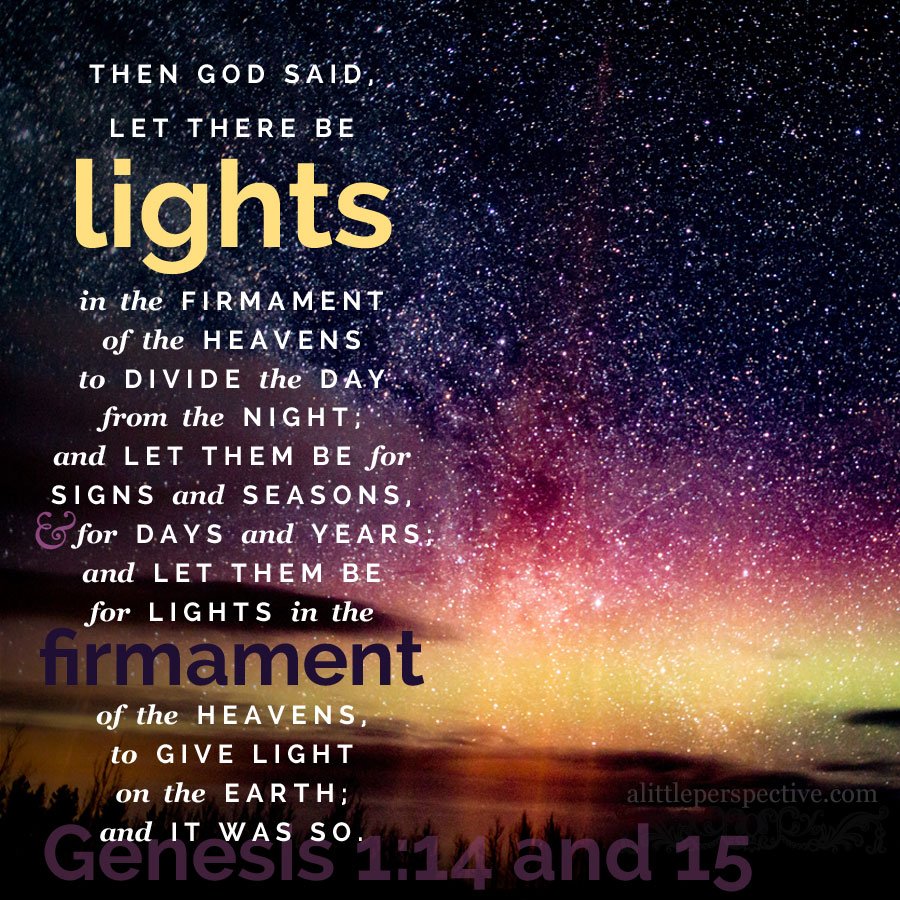Read Genesis 1 and 2 at Bible Gateway.
I use the teaching tools embedded within Scripture itself to study the word of God. One of the foremost teaching tools are Hebrew paragraph divisions. The Holy Spirit gave these to Moses as he was writing the Torah scroll on Sinai for 40 days and nights. In Hebrew Torah scrolls today, they are still preserved. They are marks, not part of the text, but indicate when a new paragraph is to begin. The English translators discarded these because sometimes they don’t make sense to human logic. However, that is the point! God is trying to teach us something if we pay attention and ask ourselves, Why does God consider all this text a single paragraph?
There are two kinds of divisions – a weak division and a strong division. A weak division indicates another facet of the same theme. A strong division indicates a new theme. I note weak divisions with {s} because the Hebrew word for that division begins with an “s” sound. I note strong divisions with {p} because the Hebrew word for that division begins with a “p” sound. These are the divisions for the first two chapters in Genesis:
Gen 1:1-5 {p} First day of Creation
Gen 1:6-8 {p} Second day of Creation
Gen 1:9-13 {p} Third day of Creation
Gen 1:14-19 {p} Fourth day of Creation
Gen 1:20-23 {p} Fifth day of Creation
Gen 1:24-31 {p} Sixth day of Creation
Gen 2:1-3 {p} Seventh day of Creation
Gen 2:4-3:15 {s} Disobedience to God’s command is sin
The chapter and verse divisions in our Bibles are different from the original Hebrew paragraph divisions. They were added many thousands of years later, during the Middle Ages by those with an anti- Torah bias. Here we see the bias in play as the seventh day, the Sabbath, is cut by the chapter division from the rest of the days of creation week, where we can see it belongs. It was instead put with the second chapter of Genesis, which was held to be allegorical in the Middle Ages. This allowed the powers that be to ignore the command to honor the Sabbath day without feeling guilty about it. The modern church inherited an anti- Torah bias from the medieval church!
Now Gen 2:4 seems to begin a new narrative, another account of the Creation, however not similar to the account in Gen 1:1-2:3. I believe this is because there has been a change of author. In Gen 2:4, “This is the account of the heavens and the earth,” the word “account” is the Hebrew toledoth, meaning generations, or history, or even, book. That this section of Genesis is a very ancient written record, and not an oral record until the time of Moses, has been proven by linguistic evidence embedded in the Torah scroll (which has remained unchanged since the life of Moses). Who was the one who wrote it down? Well, the only man alive to witness the events recorded in this section was Adam. He is the author, under the inspiration of the Holy Spirit (so it still remains the Word of God).
That begs the question, then who wrote Gen 1:1-2:3? The answer must be, logically, the only one alive to witness the events recorded therein – God. He gave the history from Gen 1:1-2:3 to Adam, and Adam, beginning in 2:4, added his own eyewitness account, or toledoth. The two accounts are not contradictory, but just the same event witnessed from two different perspectives. God relayed His account in Gen 1:1-2:3 chronologically; however, Adam relayed his account beginning in Gen 2:4 according to a different criteria – thematically. We get in trouble when we expect every narrative in Scripture to be chronological. Understanding this eliminates half the charges of contradictions in the Bible out there.
For further reading:
Genesis: Finding Our Roots
Genesis 1:1 – Truths hidden within in the Aleph-Bet
Six Literal Days
Linguistics, Genesis, and Evolution
Does Genesis 1:1-2 refer to the first day?
Do Genesis 1 and 2 contradict each other?
Gen 1:1-2:3 chiastic structure
Genesis 2:17 – You shall surely die
Genesis 1 index of studies
Genesis 2 index of studies

















Leave a Reply